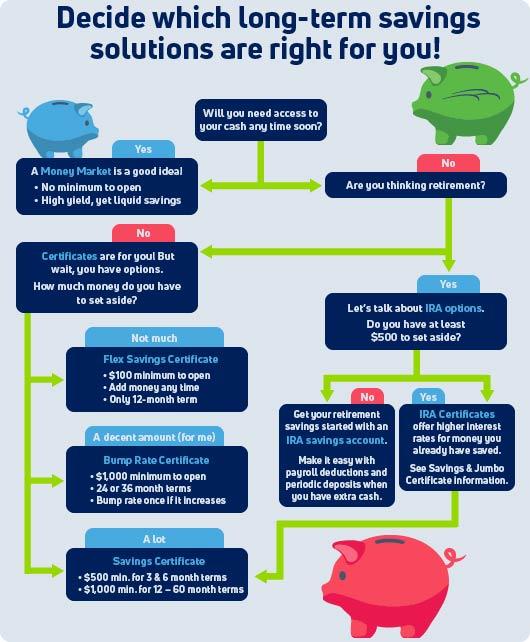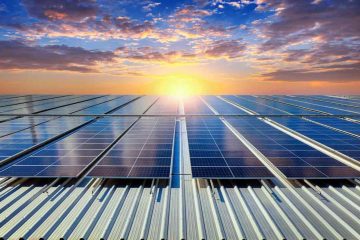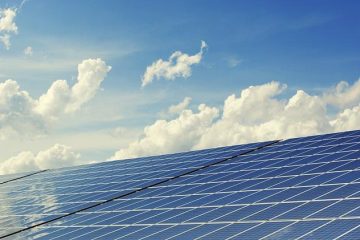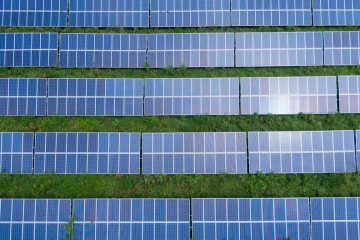Table of Contents
- Understanding the Factors Influencing Solar Panel Installation Costs
- Breaking Down the Initial Investment: What to Expect
- Long-Term Savings and Financial Incentives from Solar Panel Systems
- Choosing the Right Installer: Key Considerations for Cost Efficiency
- Additional Expenses Beyond the Purchase: A Comprehensive Overview
- Q&A
- The Conclusion


Understanding the Factors Influencing Solar Panel Installation Costs
When considering solar panel installation, several key elements play a pivotal role in determining the overall costs. One of the most significant factors is the type of solar panel technology being utilized. Different technologies, such as monocrystalline, polycrystalline, and thin-film panels, have varying efficiency, lifespan, and energy output, which can affect the initial investment. Here are some of the common types:
- Monocrystalline: Higher efficiency but often more expensive.
- Polycrystalline: More affordable but slightly lower efficiency.
- Thin-film: Flexible and lightweight, generally less efficient.
Another crucial consideration is the size and scale of the installation. The overall cost will increase with the amount of energy you wish to generate; larger systems require more panels, additional wiring, and perhaps even structural upgrades to support them. Additionally, the location of the installation can influence costs substantially. Regions with high solar irradiance allow for smaller systems to still meet energy needs effectively, while areas with less sunlight may require larger systems. Furthermore, local installation regulations and permitting fees also contribute to the variance in installation costs.
Lastly, the expertise of the installation contractor can impact your investment. Skilled professionals may charge higher rates, but their experience can lead to more efficient installations, potentially saving money in the long run through lower energy bills and fewer maintenance issues. Always consider obtaining multiple quotes and asking for references to gauge the quality of service. Taking these factors into account will provide a clearer picture of what to expect when planning for solar panel installation costs.


Breaking Down the Initial Investment: What to Expect
When considering solar panel installation, the initial investment can vary significantly based on several factors. The average cost per watt can range from $2.50 to $3.50, depending on the quality of the panels and the complexity of the installation. Factors such as your location, the size of your system, and desired energy output will influence the total price. Here are some key components that contribute to the overall cost:
- Solar Panels: The primary expense, typically accounting for 40% to 60% of the total cost.
- Inverters: Essential for converting solar energy into usable electricity; this can add another 10% to 20%.
- Installation Labor: Professional installation is crucial; labor costs can amount to 15% to 25% of your budget.
- Permits and Fees: Local regulations may require permits, resulting in additional costs.
- Additional Equipment: This can include mounting systems and batteries, which enhance system efficiency.
To provide a clearer picture of potential expenses, here’s a simplified breakdown of costs associated with a typical system:
| Component | Estimated Cost |
|---|---|
| Solar Panels | $8,000 – $12,000 |
| Inverter | $1,000 – $3,000 |
| Installation Labor | $1,500 – $3,000 |
| Permits and Fees | $200 – $500 |
| Additional Equipment | $1,000 – $2,500 |
the total investment for solar panel installation can range from $10,000 to $20,000 or more, depending on the specifics of your project. While this upfront cost may seem daunting, it’s important to consider the long-term savings on energy bills and potential tax incentives that can significantly offset these expenses. Carefully evaluating your options and consulting with professionals can help ensure you make the most cost-effective decisions tailored to your energy needs.


Long-Term Savings and Financial Incentives from Solar Panel Systems
Investing in solar panel systems offers a transformative opportunity for homeowners to achieve substantial long-term savings. By harnessing renewable energy, households can significantly reduce their monthly electricity bills. Many users report savings of up to 50% or more on energy costs, translating into thousands of dollars over the lifespan of the solar system, which typically ranges from 25 to 30 years. These savings accumulate as energy prices increase and provide homeowners with predictable energy costs, further enhancing budget stability.
In addition to the direct savings on electricity bills, there are several financial incentives available to encourage solar adoption. Many states and local governments offer tax credits, rebates, and other programs designed to reduce the initial installation costs. For example, the Federal Investment Tax Credit (ITC) allows homeowners to deduct a percentage of the installation cost from their federal taxes. Some notable incentives include:
- State-specific solar rebates
- Property tax exemptions for solar systems
- Net metering programs that offer credits for excess energy generated
Furthermore, the long-term value of solar panels can be illustrated through their impact on property values. Homes equipped with solar energy systems often see an increase in market value, making them a compelling investment for homeowners looking to sell in the future. A recent study found that homes with solar installations sell for about $15,000 more on average compared to similar homes without solar technology. This added value, combined with ongoing energy savings, makes solar panels not just a green solution, but also a financially savvy choice.


Choosing the Right Installer: Key Considerations for Cost Efficiency
When considering solar panel installation, selecting the right installer is crucial for optimizing both your budget and the overall efficiency of the system. Here are some key factors to keep in mind while navigating your options:
- Experience and Qualifications: Look for installers with a proven track record, industry certifications, and relevant experience. It’s advisable to check reviews and testimonials to gauge their reputation and customer satisfaction.
- Warranty and After-Sales Support: Ensure that the installer offers robust warranty options for both the panels and the installation work. Additionally, inquire about their after-sales support to understand how they will assist if issues arise post-installation.
- Customization and Flexibility: A good installer should provide solutions tailored to your specific energy needs and property. Discuss your requirements openly to see if they are willing to adapt their offerings.
Cost efficiency in solar panel installation is not solely about the upfront expense—it’s also about assessing the long-term value. Here’s how different aspects contribute to your overall financial consideration:
| Feature | Cost Impact (Short-term) | Cost Impact (Long-term) |
|---|---|---|
| High-Quality Panels | Higher initial cost | Lower maintenance and replacement costs |
| Professional Installation | More expensive upfront | Improved efficiency, resulting in savings |
| Reputable Installer | Potentially higher fees | Enhanced reliability and performance |
always ask for multiple quotes and compare them not just on price but on the value offered. Seek transparency regarding what each quote includes, such as materials, labor, and any additional fees. This will help you make a more informed decision:
- Detailed Estimates: A detailed breakdown will clarify costs associated with individual components, making it easier to assess where savings can be made.
- Payment Options: Investigate the variety of payment plans available; some installers may offer financing options that can alleviate the financial pressure upfront.
- Incentives and Rebates: Discuss potential local or federal incentives and rebates. A knowledgeable installer should be able to advise you on how to maximize these savings.
Additional Expenses Beyond the Purchase: A Comprehensive Overview
When considering the installation of solar panels, it’s crucial to account for expenses that extend beyond the initial purchase. While many homeowners focus solely on the price of the panels and installation labor, several other costs can significantly impact the overall investment. Understanding these additional expenses can help you budget more effectively and avoid surprises down the line.
Permits and Inspection Fees: Before installing solar panels, you will likely need to obtain various permits from your local government. These fees can vary widely based on your location and the regulations in place. In addition to permits, there may be inspection fees to ensure that the installation complies with safety and building codes. It’s advisable to check with your local authority to get precise estimates for these expenses.
Maintenance and Monitoring: Once your solar panels are installed, ongoing maintenance is essential for optimizing their efficiency and lifespan. Although solar systems generally require minimal upkeep, occasional cleaning and inspections can prevent issues. Furthermore, investing in monitoring systems can help track performance and energy production, providing peace of mind and ensuring your system operates at peak efficiency. Budgeting for these maintenance needs is part of a holistic approach to solar energy investment.
| Expense Type | Estimated Cost |
|---|---|
| Permits | $100 - $500 |
| Inspection Fees | $150 – $300 |
| Maintenance (Annual) | $200 - $400 |
| Monitoring System (Optional) | $100 – $300 |
Q&A
Q&A: Understanding Solar Panel Installation Costs
Q1: What factors influence the cost of installing solar panels? A1: The installation cost of solar panels can vary significantly based on several key factors. These include the size of your system (measured in kilowatts), the type of solar panels you choose (monocrystalline vs. polycrystalline), installation complexity, your geographic location, and any necessary permits or inspections. Additional costs may arise from roof condition or if a solar battery is included in the system.Q2: How much can I expect to pay for solar panel installation? A2: Generally, the average cost for solar panel installation ranges between $15,000 and $25,000 for a typical residential system, before any tax credits or incentives. This translates to roughly $3 to $5 per watt. However, considering various factors such as location and government incentives, many homeowners find that the actual out-of-pocket expense can be substantially lower.
Q3: Are there any financial incentives available to reduce installation costs? A3: Yes, numerous financial incentives can help alleviate the cost of installing solar panels. The Federal Solar Investment Tax Credit (ITC) allows homeowners to deduct a significant percentage of their solar installation costs from their federal taxes. Many states and local governments also offer rebates, tax credits, and financing options designed to make solar energy more accessible.
Q4: Is it worth investing in solar panels despite the initial costs? A4: Investing in solar panels can be worthwhile over the long term. While the initial costs can be high, solar panels often lead to significant savings on electricity bills and can increase the value of your home. Furthermore, many states have favorable net metering policies, allowing you to earn credits for excess energy your system generates and feeds back into the grid.
Q5: How do I get an accurate estimate for my solar panel installation? A5: To receive an accurate estimate, it’s best to consult with a reputable solar installer. They usually provide free consultations and will assess your home’s energy needs, roof condition, sunlight exposure, and any potential shading issues. This comprehensive evaluation will allow them to recommend an appropriate system size and give you a clearer picture of overall costs.
Q6: What are the ongoing costs associated with solar panels? A6: While solar panels generally require minimal maintenance, there are some ongoing costs you should consider. These can include occasional cleaning, inverter replacement every 5 to 10 years, and potential repairs. However, these costs are typically much lower than the savings on electricity bills, making solar an attractive option in the long run.
Q7: How long does it take to recoup the initial investment in solar panels? A7: The payback period for solar panel installation typically ranges from 5 to 10 years, depending on factors such as electricity rates, the amount of sunlight your home receives, and the size of your installation. After this period, the energy generated can significantly reduce or even eliminate your electricity bills, providing substantial savings for the lifespan of the system, usually 25 years or more.—Feel free to enrich your understanding of solar panel installation costs through this Q&A, and empower yourself with the knowledge needed to make an informed decision!




0 Comments